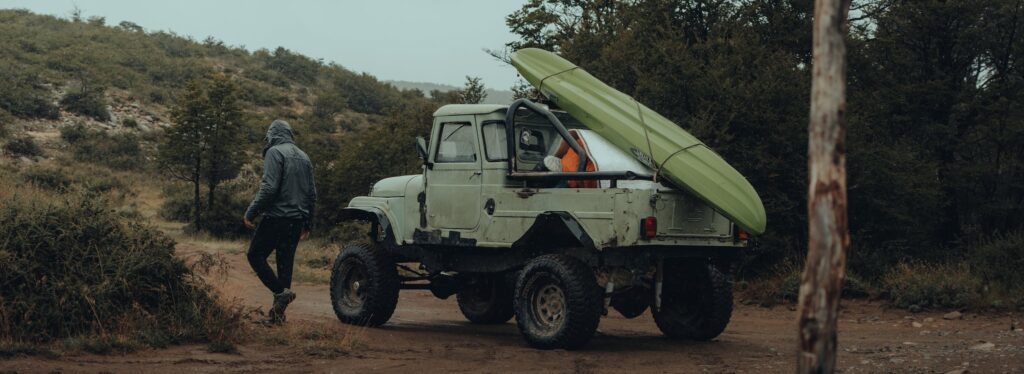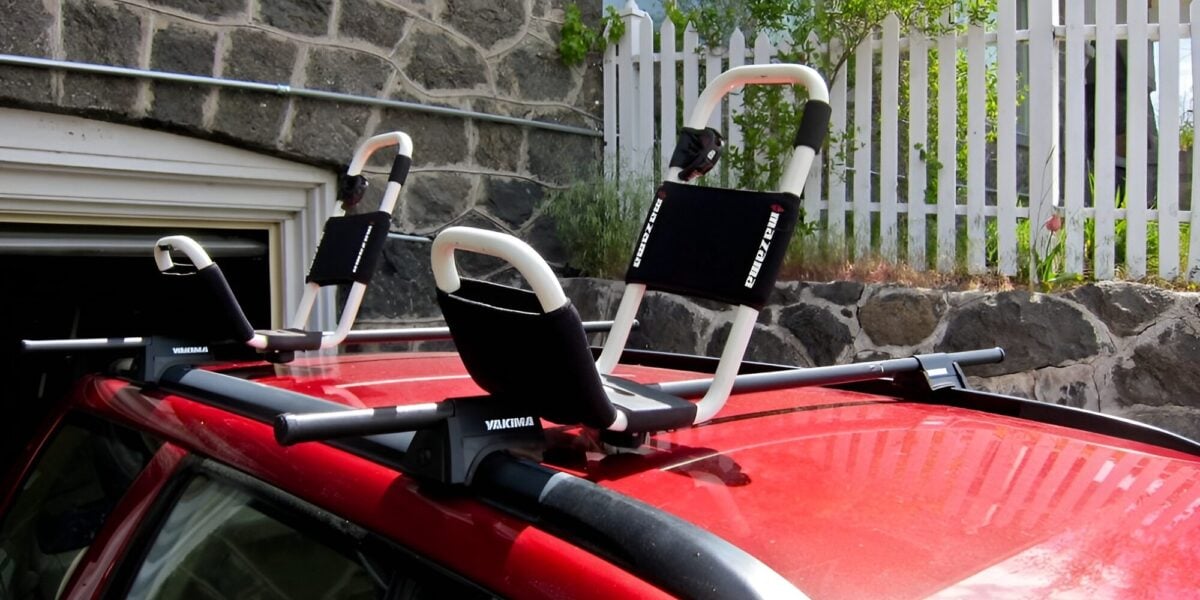If you’re a kayak enthusiast or an avid angler, you know the key to enjoying a stress-free day on the water starts with properly securing your kayak. One of the most popular and efficient methods for transporting kayaks is using a J-rack system.
These racks not only provide stability but also maximize space on your vehicle. In this comprehensive guide, we will walk you through the step-by-step process of how to tie down a kayak on a J-Rack. So, whether you’re heading out for a peaceful paddle or an exciting fishing expedition, read on to master the art of safely securing your kayak. FYI: There are three types of roof racks available for kayaks. Check our guide on how to load your kayak on a roof rack.
Choosing the Right J-Rack
Before we dive into the details of how to tie down a kayak on a J-rack, selecting the right J-rack system for your specific needs is crucial. Different models are designed to accommodate various types and sizes of kayaks. Here are some factors to consider when choosing a J-rack:
Compatibility with Your Kayak
Ensure that the J-rack is compatible with your specific kayak model. Consider weight capacity, width adjustability, and compatibility with different hull shapes.
Ease of Installation
Look for user-friendly installation features like tool-free assembly and adjustable mounting options. This will make it easier for you to attach and detach the rack as needed.
Durability and Stability
Opt for racks made from sturdy materials like aluminum or heavy-duty plastic. The rack should securely hold your kayak in place during transportation without wobbling or shifting.
Once you have chosen the appropriate J-rack system for your kayak, it’s time to move on to the following steps: loading and securing your kayak.

Step 1: Preparing Your Kayak
Begin by preparing your kayak for transport. Ensure it is clean from debris or dirt that may scratch its surface during transportation. Remove loose or detachable accessories, such as fishing rods or seats, and store them securely.
Step 2: Positioning the J-Rack
Position your J-rack on your vehicle’s roof according to the manufacturer’s instructions. The rack should be centered and evenly spaced to properly distribute the kayak’s weight. Take note of any specific guidelines for your particular J-rack model.
Step 3: Placing Your Kayak on the J-Rack
Carefully lift your kayak and place it on the J-rack, aligning it with the grooves or supports provided by the rack. Ensure that the kayak is centered and positioned parallel to your vehicle.
Step 4: Securing the Bow and Stern
To prevent any forward or backward movement during transport, secure both the bow (front) and stern (rear) of your kayak using straps or ropes. Follow these steps for secure tie-down:
Bow:
- Attach one strap end to a sturdy anchor point on your vehicle’s front bumper.
- Run the strap over the top of your kayak’s bow, ensuring it is snug but not overly tight.
- Attach the other end of the strap to an anchor point on your vehicle’s front bumper, preferably on the opposite side.
Stern:
- Repeat the same process for securing the stern of your kayak, using an anchor point on your vehicle’s rear bumper.
- Ensure both straps are tightened evenly, providing equal tension on both sides.
Step 5: Additional Security Measures
For added peace of mind, consider using additional security measures such as bow and stern lines or cam buckle straps. These will provide extra stability during highway speeds or windy conditions.
With these steps in mind, you can confidently hit the road knowing that your kayak is securely fastened to your vehicle’s J-rack system. Remember always to double-check the tightness of your straps before embarking on your journey.
Final Thoughts
Properly securing your kayak is essential for a safe and enjoyable outdoor adventure. Using a J-rack system offers convenience, stability, and efficient use of space on your vehicle. Following the steps outlined in this guide, you can securely tie down your kayak on a J-rack, ensuring a worry-free transportation experience. So get out there, explore new waterways, and make lasting memories with the peace of mind of knowing your kayak is securely fastened to your vehicle. Happy paddling!











